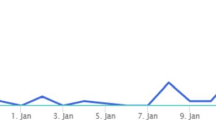Abstract
The implementation of intelligent services at university level is another step towards the transformation of education. The main goal of any innovation in education is to improve the quality of education, this is a complicated concept, because there are many variables that need to be considered in the success or failure of these innovations. These innovations include the implementation of chatbots. The use of chatbots in a common space has confirmed its viability and it is therefore quite logical that these solutions can be applied in a university environment. Although it has had many applications in several sectors over the last decade, their implementation in higher education is still in its infancy. The chatbot market is expected to grow tremendously between 2020 and 2024, so it is high time for universities to implement chatbots. This paper will look at how companies have improved their services and processes by implementing chatbot services and how this can translate into a more efficient and effective university environment.
Access this chapter
Tax calculation will be finalised at checkout
Purchases are for personal use only
Similar content being viewed by others
References
Nimavat, K., Champaneria, T.: Chatbots: an overview types, architecture, tools and future possibilities. Int. J. Sci. Res. Dev. 5(7), 1019–1024 (2017)
Adamopoulou, E., Moussiades, L.: An overview of chatbot technology. In: Maglogiannis, I., Iliadis, L., Pimenidis, E. (eds.) AIAI 2020. IFIP Advances in Information and Communication Technology, vol. 584, pp. 373–383. Springer, Cham (2020). https://doi.org/10.1007/978-3-030-49186-4_31
Hien, H.T., et al.: Intelligent assistants in higher-education environments: the FIT-EBot, a chatbot for administrative and learning support. In: Proceedings of the Ninth International Symposium on Information and Communication Technology, pp. 69–76 (2018)
Ramesh, K., Ravishankaran, S., Joshi, A., Chandrasekaran, K.: A survey of design techniques for conversational agents. In: Kaushik, S., Gupta, D., Kharb, L., Chahal, D. (eds.) ICICCT 2017. Communications in Computer and Information Science, vol, 750, pp. 336–350. Springer, Singapore (2017). https://doi.org/10.1007/978-981-10-6544-6_31
Wu, Y., et al.: Sequential matching network: a new architecture for multi-turn response selection in retrieval-based chatbots. arXiv preprint arXiv:1612.01627 (2016)
Conversational AI Platform for Enterprise – Teneo—Artificial Solutions 2022. Chatbots: the Definitive Guide 2021. https://www.artificial-solutions.com/chatbots#2. Accessed 20 Apr 2022
Gapanyuk, Y., et al.: The hybrid chatbot system combining Q&A and knowledge-base approaches. In: 7th International Conference on Analysis of Images, Social Networks and Texts, pp. 42–53 (2018)
Author information
Authors and Affiliations
Corresponding author
Editor information
Editors and Affiliations
Rights and permissions
Copyright information
© 2022 The Author(s), under exclusive license to Springer Nature Switzerland AG
About this paper
Cite this paper
Košecka, D., Balco, P., Murgor, S.C. (2022). Chatbot at University, a Communication Tool to Increase Work Productivity. In: Barolli, L., Miwa, H. (eds) Advances in Intelligent Networking and Collaborative Systems. INCoS 2022. Lecture Notes in Networks and Systems, vol 527. Springer, Cham. https://doi.org/10.1007/978-3-031-14627-5_8
Download citation
DOI: https://doi.org/10.1007/978-3-031-14627-5_8
Published:
Publisher Name: Springer, Cham
Print ISBN: 978-3-031-14626-8
Online ISBN: 978-3-031-14627-5
eBook Packages: Intelligent Technologies and RoboticsIntelligent Technologies and Robotics (R0)




